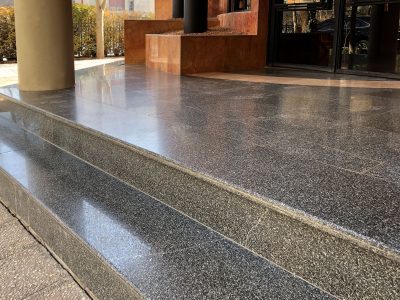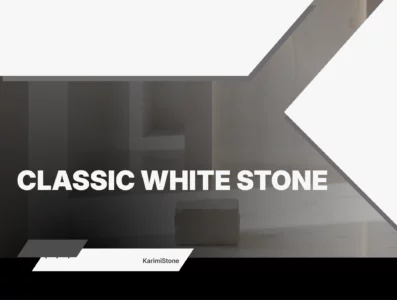
Post Page
Paver Stone : Transform Your Space with Paver Stone Elegance

Paver stone is a popular material used for outdoor flooring. It is made from natural or man-made materials and used in patios, walkways, driveways, and gardens. Due to its strength, long life, and attractive patterns, it is chosen by both homeowners and contractors.
What Is a Paver Stone?
A paver stone is a piece of stone, brick, or concrete used to make a solid surface outdoors. These stones are placed side-by-side in a pattern to create paths or platforms. They come in many shapes and colors and are easy to maintain. Paver stones can be made from materials like:
- Natural stone (granite, limestone, travertine, and…)
- Concrete
- Clay bricks
Why Is Base Material Important?
Before laying paver stones, the base layer must be prepared. A strong and level base keeps the pavers in place and prevents sinking or cracks. It also helps with water drainage. The base layers include:
- Crushed stone or gravel
This is the main support layer. It helps spread weight and improves drainage. - Sand bedding layer
This soft layer helps to level the pavers and makes adjustments easy. - Paver sand
After installation, this sand is swept into the joints to lock the stones in place.
Common Types of Paver Stones
There are two main types of pavers:
- Natural Stone Pavers
Made from granite, limestone, or travertine. These are strong, weather-resistant, and long-lasting.
- Concrete Pavers
Factory-made and available in many sizes. They are more affordable but may wear down faster than natural stone.
Best Base Materials for Pavers
Here are some base materials used under pavers:
- Crushed limestone
Easy to compact and long-lasting - Concrete
A strong base for driveways or heavy traffic - Sand
Good for light foot traffic and easy to level - Compacted soil
Not recommended unless temporary; it may lead to shifting and water pooling
Step-by-Step Installation Process
- Excavate the area
Remove grass and topsoil to a proper depth. - Add crushed rock base
Lay 4–6 inches of compacted gravel. - Add bedding sand
Spread and level 1 inch of sharp sand. - Lay pavers
Place each stone according to your desired pattern. - Fill joints with paver sand
Sweep the sand over the surface and into the joints. - Compact and seal
Press the stones and apply sealant for extra protection.
Where to Use Paver Stones
Paver stones are suitable for:
- Patios
- Walkways
- Driveways
- Pool decks
- Garden paths
- Rooftop terraces
- Courtyards
Benefits of Paver Stones
- Strong: Withstand heavy use without cracking
- Slip-resistant: Safer in wet areas
- Easy to repair: Replace single stones if damaged
- Low maintenance: Needs only basic cleaning
- Flexible design: Many colors and patterns to choose from
Key Considerations Before Installation
- Drainage: Make sure water flows away from the house
- Permits: Check if your city requires a building permit
- Weather resistance: Choose the right stone for hot, cold, or wet areas
- Budget: Factor in base material, installation, and stone type
Tips for a Long-Lasting Paver Patio
- Use a proper 4–6-inch crushed rock base
- Add 1 inch of sand for leveling
- Keep sand between the stones topped off regularly
- Seal the surface every few years
- Clean stains quickly before they set
Why Choose Negin Sang Karimi (Karimi Stone)?
With over 55 years of experience in natural stone supply, Negin Sang Karimi (Karimi Stone) provides:
- High-quality paver stones in custom sizes
- Expert advice on base materials and patterns
- Fast and safe delivery to many countries
- Samples available before order confirmation
- Competitive pricing for bulk and custom orders
We support builders, contractors, and homeowners with complete solutions.









 Online Catalogue
Online Catalogue
